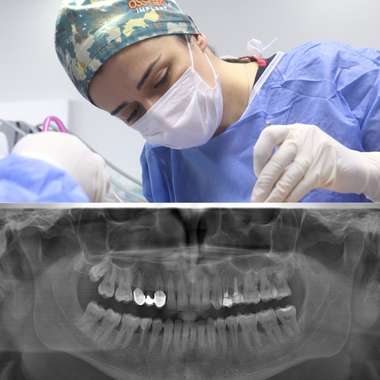CT SCAN
December 8, 2023
Porcelain Crown
December 23, 2023
Bone Loss in Teeth
Do you have one or several missing teeth? Do you have periodontitis (gum disease) or peri-implantitis (gum disease)? It is very important to stop bone loss in its tracks and develop a strategy to replace what has been lost.
What Causes Tooth-Related Bone Loss?
Bone loss is quite common and usually involves vertical or horizontal bone loss.
Missing Teeth
In the first year after a tooth is extracted, some of the surrounding bone is lost and continues to erode over time. For this, a crown bridge or implant can be placed in the area because the pressure and stress of chewing can cause resorption in the area where your jawbone is normally located.
Periodontitis (around the tooth) or peri-implantitis (around the implant) is caused by bacteria in your mouth causing bone resorption around the tooth or implant.
Is It Possible to Reverse Jaw Bone Loss?
Bone loss cannot be reversed on its own. Especially horizontal loss is difficult to stop with treatment, but it can be slowed down. If it is too late, the bone in your jaw and surrounding teeth will melt away, causing further tooth loss, disease and discomfort. With excellent periodontal care, you can actually repair the bone and reverse bone loss. Surgical block grafting also gives very good results.
What Is the Best Way to Deal With Dental Bone Loss?
We offer state-of-the-art treatments for jaw bone loss. When one of our doctors recommends a bone loss treatment, it is because:
To protect existing teeth or implants.
The stability of your jaw bone prevents an implant or other restorative procedure from being successful.
We’ll assess your issue and recommend the best course of action, which might include:
-Guided Bone Regeneration: Reconstructs damaged bone, providing an adequate, strong and secure foundation for the replacement of a missing tooth.
-Bone Graft: Protects the health of your teeth by strengthening the skeleton surrounding your teeth.
Is It Possible to Prevent Bone Loss?
As soon as you lose a tooth, get a new one.
Maintain proper oral hygiene habits on a daily basis.
Have your teeth cleaned and examined regularly.
Follow all treatment or preventive advice from your dentist.
